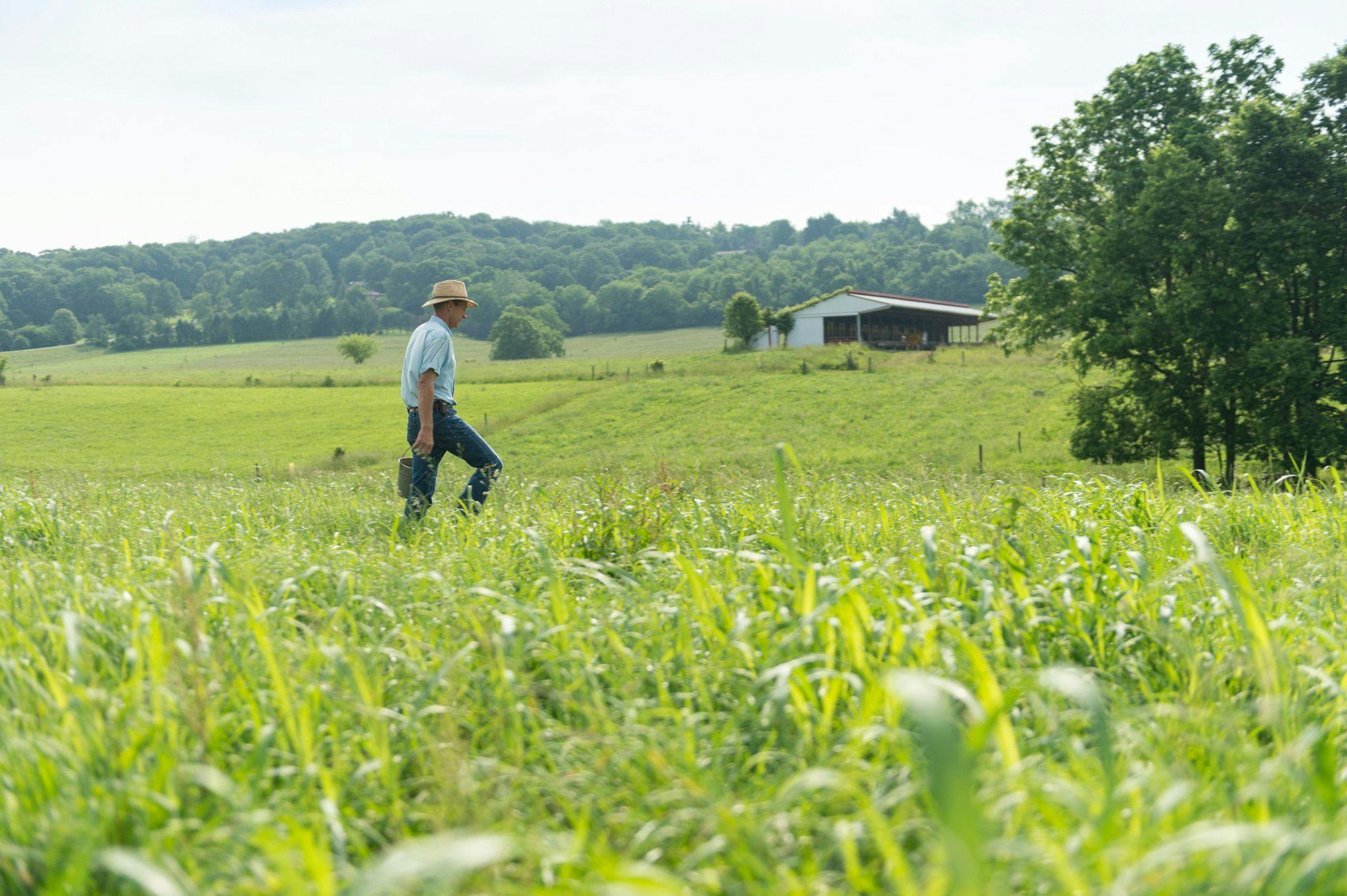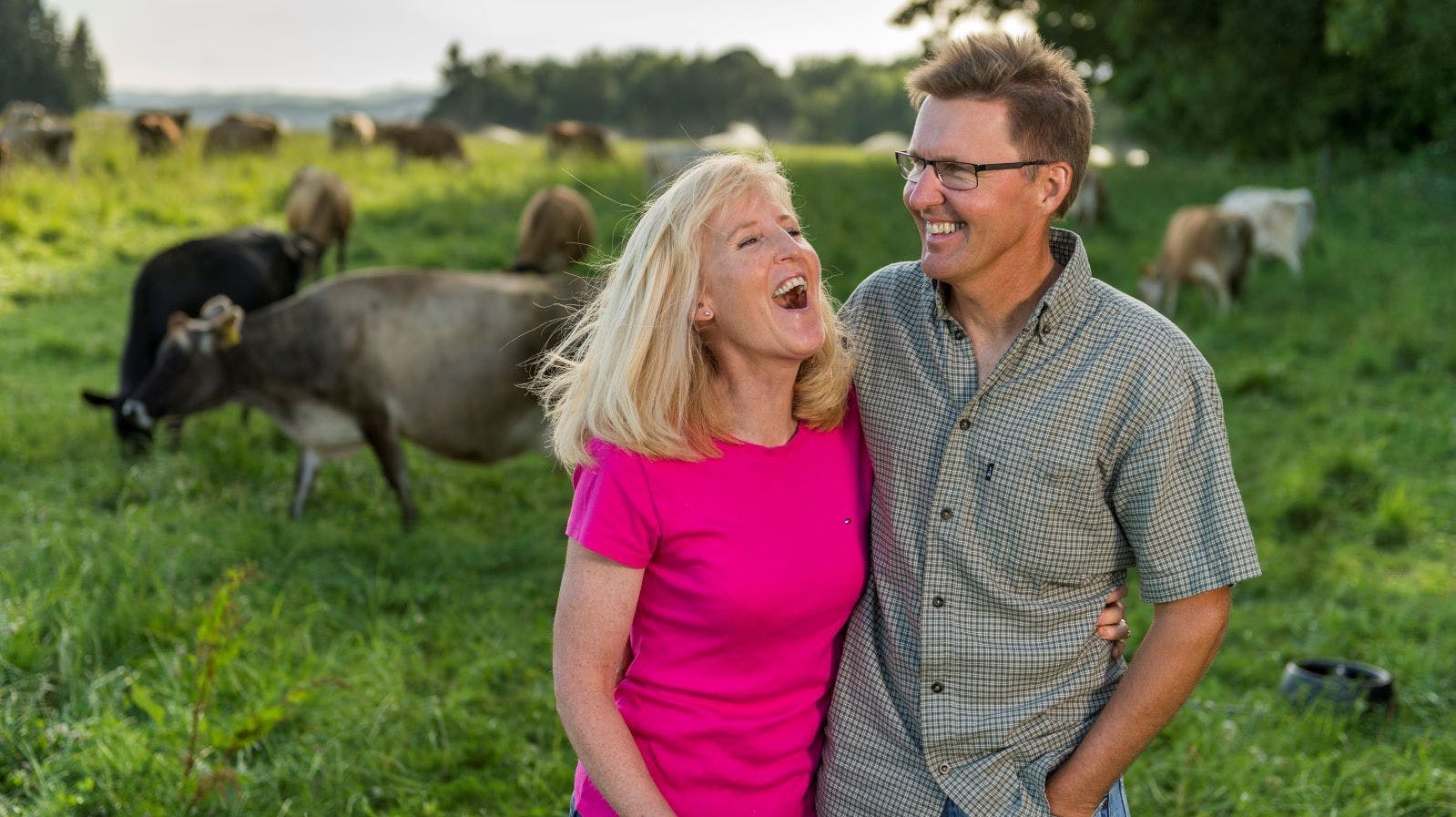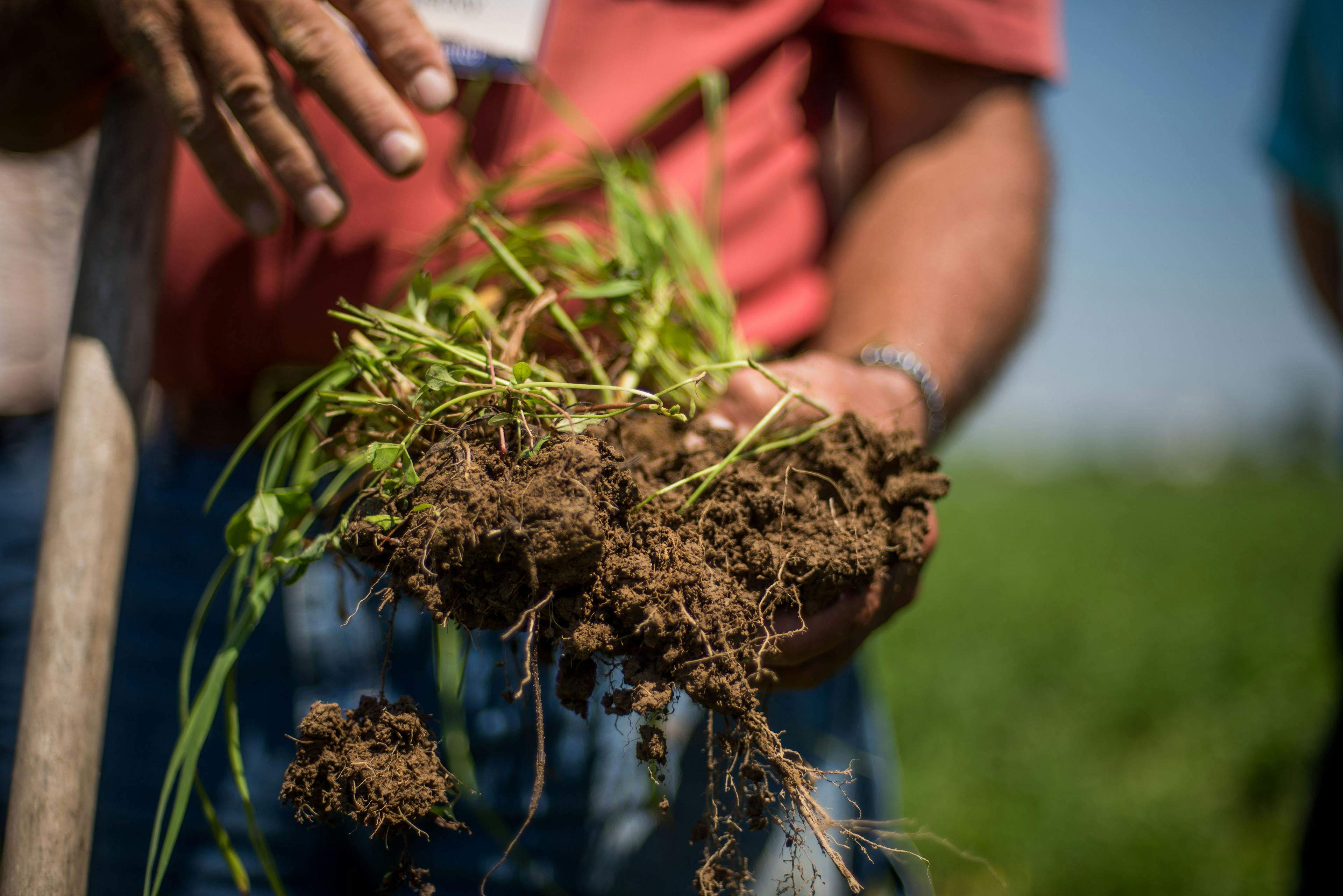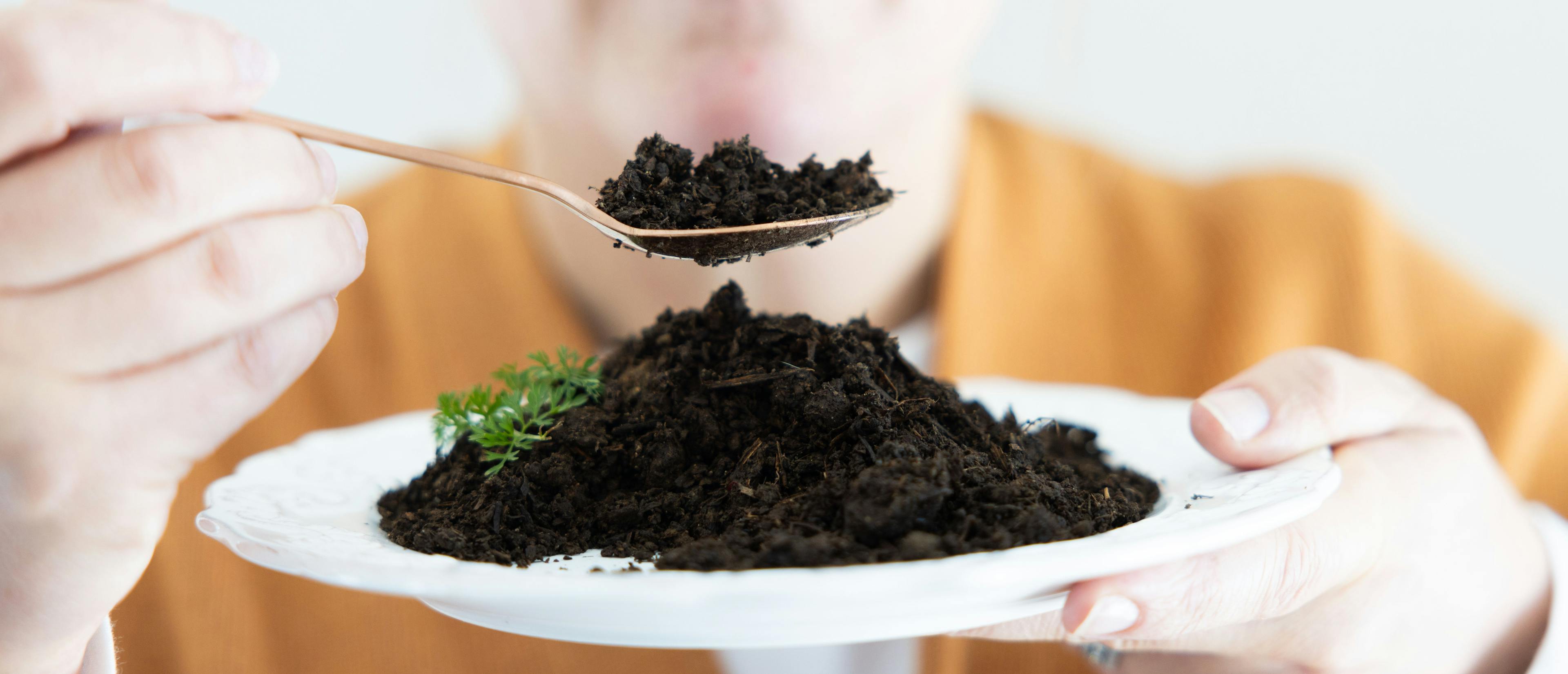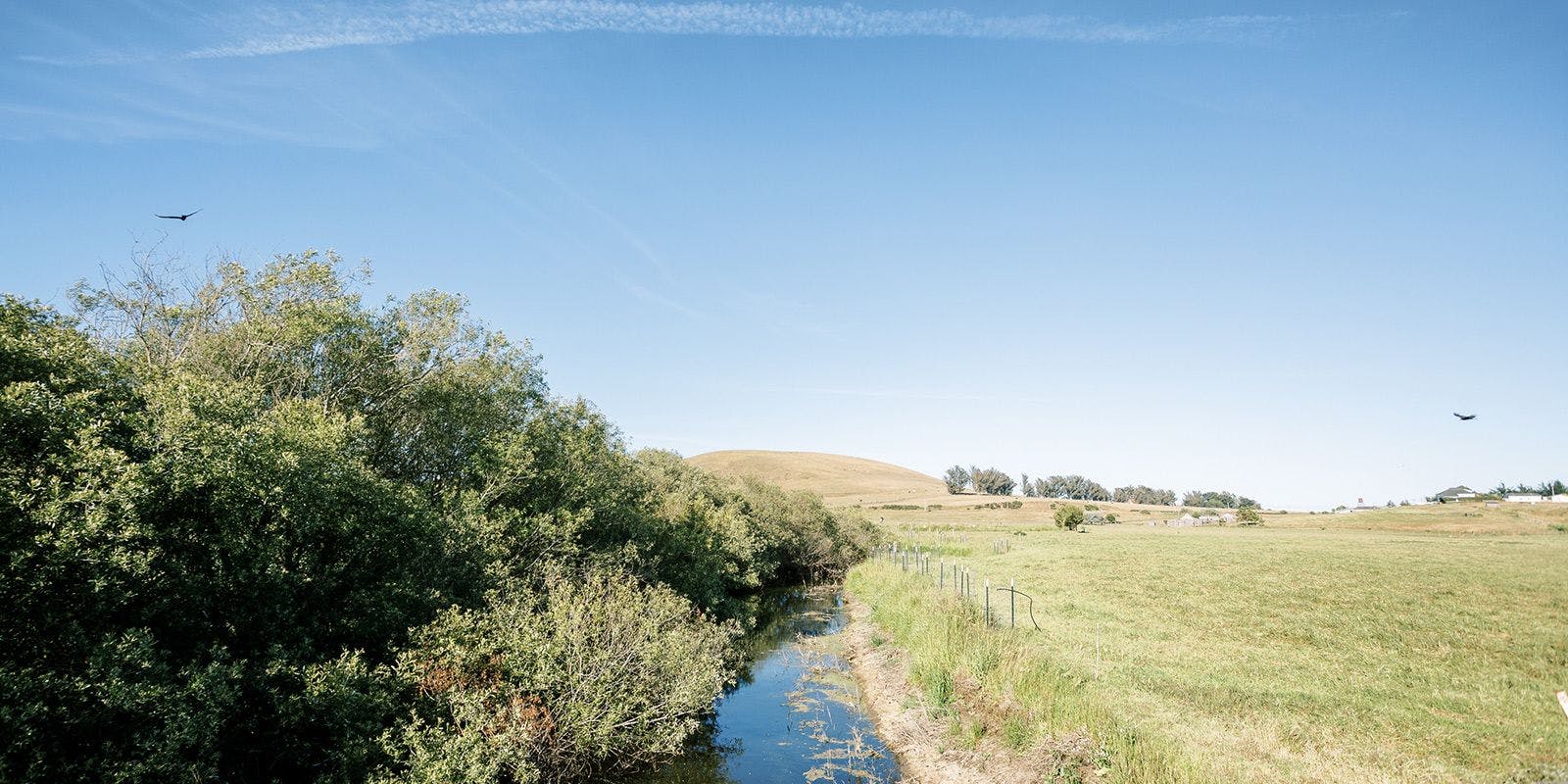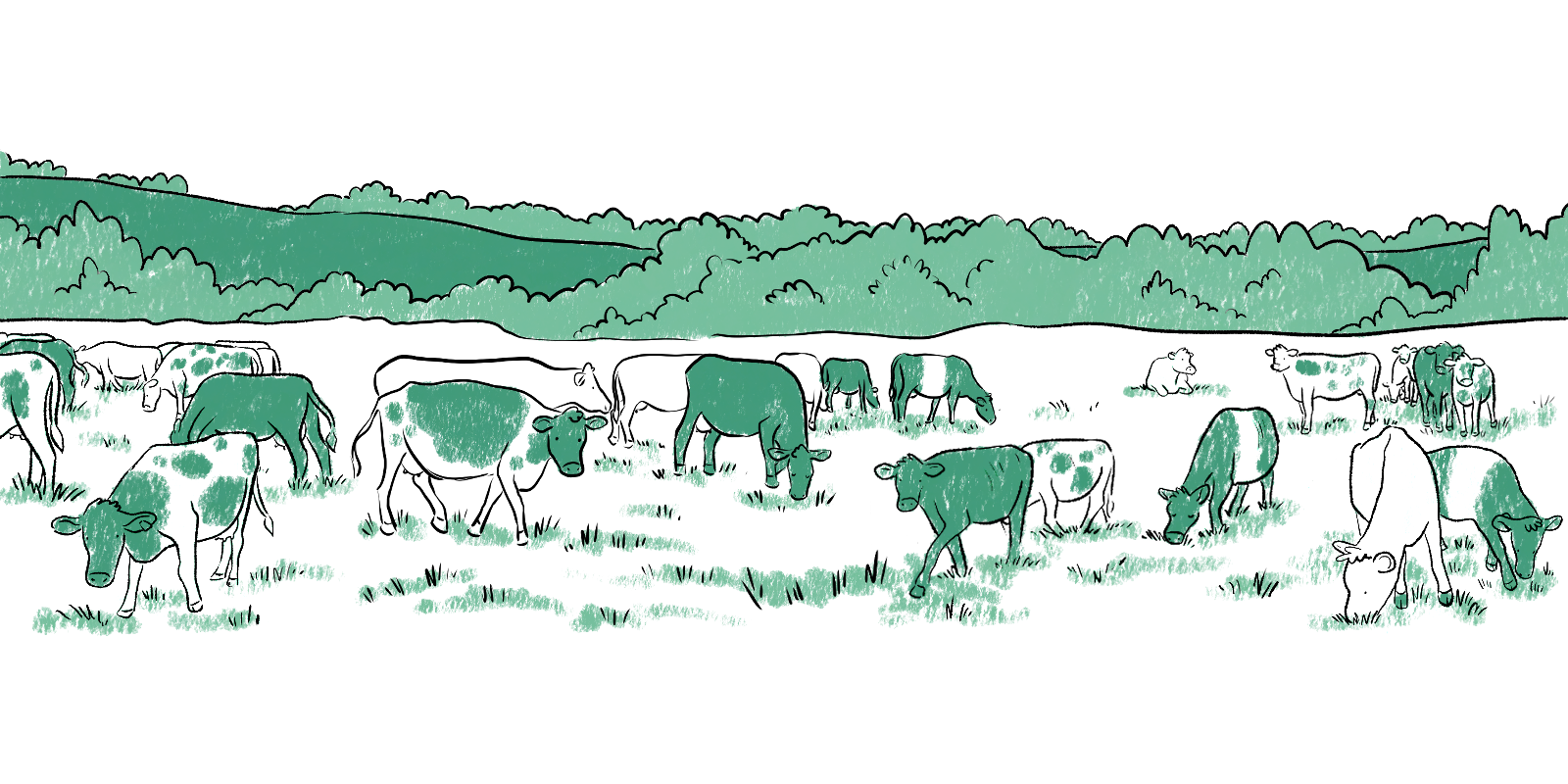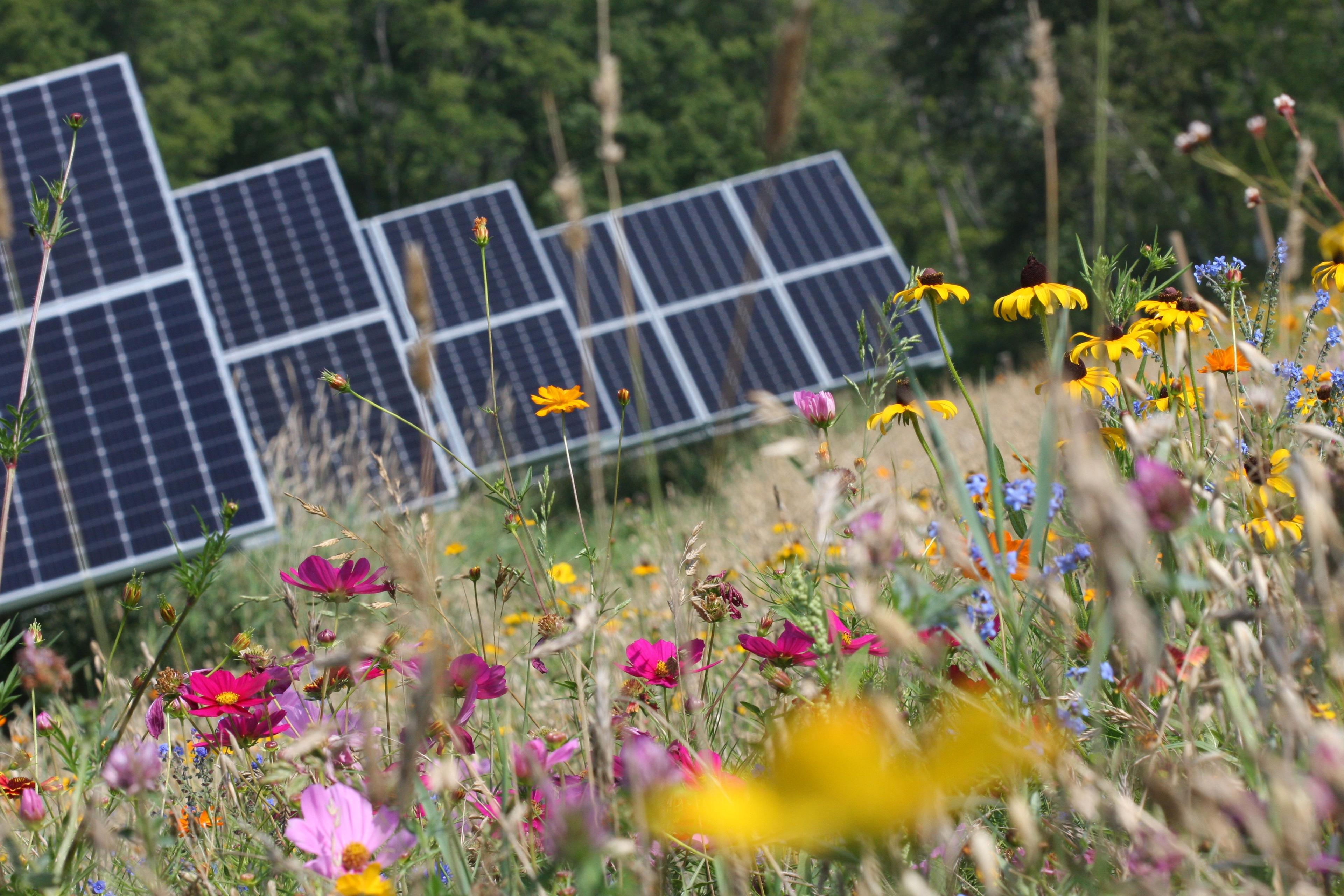
Earth
Trees, Solar, Compost and Other Earthly Endeavors
Organic Farms and the Planet Benefit from Innovative Carbon Insetting Program
It’s not all talk and greenwashing, we can and are verifying eco-friendly practices that are making a difference on our farms and beyond.
Organic Valley co-op members for more than 20 years, the Wilson family’s vision hasn’t changed, but some of its processes have.
Chris Wilson said his family’s approach to farming is producing food in a way that is sustainable forever.
“We promote a food production system that produces good food for people but maintains an environment that does not deplete natural resources,” the Wisconsin organic dairy farmer said.
Implementing eco-friendly practices, like adopting solar and other regenerative practices help meet this holistic endeavor, he said.
The family adopted solar on its farm in 2017. Solar replaces half of the utility grid-power used on the farm, and in the next five years the family would like to see that increase to 80 to 100%. An Organic Valley program will help make this possible.
Wilson is among 10 of the first farmers to enroll in the Organic Valley Carbon Insetting Program.
The program awards participating farmers for reducing their emissions and for sequestering more carbon. Farmers do this by planting trees, installing solar, making organic compost, upgrading manure management systems, providing animals enteric feed supplements (to reduce methane) and more.
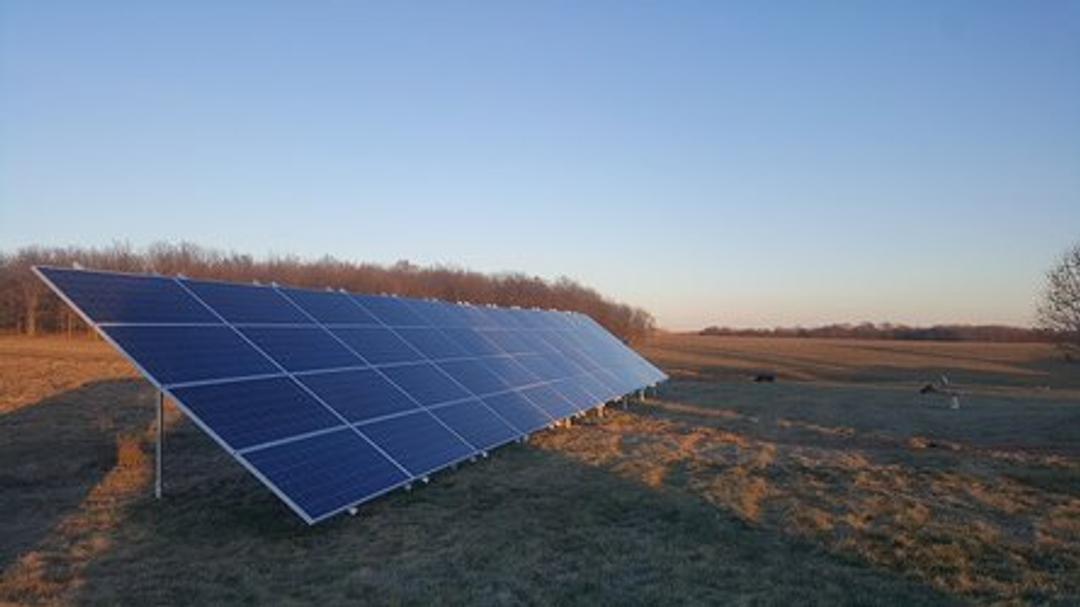
Solar arrays are shown on the Wilson farm, Wisconsin.
“The goal is constantly trying to find ways to sequester carbon and make healthy soil. Healthy soil supports healthy cows, healthy cows make delicious and nutritious milk — all this goes hand in hand," Wilson said.
The insetting program covers 25 states on farms that produce organic dairy. The program will expand to organic egg farms within the next two years.
Reducing Emissions and Sequestering Carbon
Carbon insetting is real, it’s here and Organic Valley is putting it to practice. We can see the newly planted trees growing and blooming in the spring — trees that will not only sequester more carbon as they grow but will provide beneficial shade for grazing cows.
The co-op received a $25 million USDA Partnerships for Climate-Smart Commodities grant to help fund the insetting program. This funding will allow the co-op to implement 1,200 new climate-smart practices on 500 member farms.
Monitoring, measuring and quantifying carbon reductions and removals can be a real challenge. There is no chart telling us how much carbon should be reduced. We can verify these sustainable practices are reducing emissions and sequestering more carbon because we take actual carbon measurements to verify. A third-party validator, SustainCert, ensures the climate claims are accurate and follow best practices
“We feel it’s really important to be accurate, truthful and transparent with our farmers and customers,” said Nicole Rakobitsch, Organic Valley director of sustainability. “In the end, it allows us to confidently stand behind the carbon claims we will make in our annual greenhouse gas reporting.”
The Farmer Carbon Committee oversees the program, and Organic Valley is intricately involved, from the first phone call with the farmer to the final carbon impact unit.
Carbon Insetting vs. Carbon Offsetting
By participating in the Carbon Insetting Program, our farmers can ensure that their carbon credits stay with their farm and benefit the co-op and Earth, helping to reach our collective carbon neutral goal. The cooperative intends to be carbon neutral by 2050.
Carbon insetting: Carbon reductions and removals in our supply chain through validated and verified eco-friendly practices.
Carbon offsetting: Purchasing carbon credits that happen outside of a company’s supply chain (ex. buying reductions from tree plantings in South America). When a company purchases credits, it does not actually reduce its direct supply chain carbon emissions.
Carbon neutrality: When greenhouse gas emissions are reduced at the source and the remaining emissions are removed by plants through carbon sequestration, leaving a zero balance.
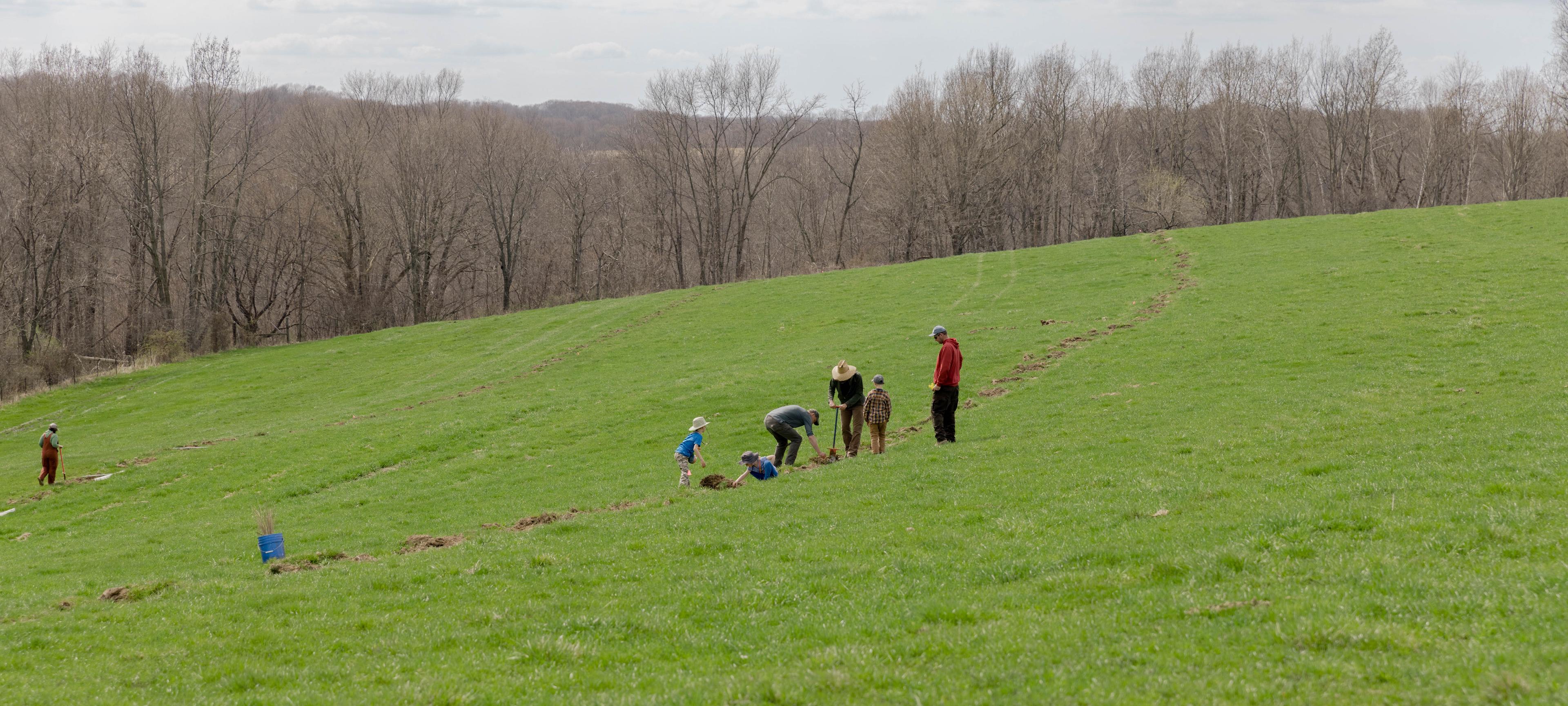
Tree planting at the Gretebeck family’s organic farm near Cashton, Wisconsin.
Planting Trees to Sequester Carbon
While the Wilsons generate solar energy to reduce their farm’s greenhouse gas emissions, the Gretebeck family has planted trees to provide shade for cow comfort and to increase carbon sequestration on the farm. The Gretebecks are the first family to receive payment from the program.
Last year, a team of Organic Valley staff, local conservationists and volunteers helped the Gretebecks plant 1,100 trees in a pasture dedicated to silvopasture on their Wisconsin farm. This year, they got paid for the carbon those trees are helping sequester through the Organic Valley Carbon Insetting Program.
Over about 10 years, these 1,100 tree seedlings will sequester an estimated 40 metric tons of carbon dioxide, according to the program’s agroforestry quantification method.
The farm is in a key watershed restoration area. It was one of several farms impacted by a 2018 deluge that dumped more than 10 inches of rain within 24 hours, bursting a dam in the valley above the farm. This washed away a barn, and the family’s pumpkin patch agritourism operation disappeared overnight. Tractors and other implements were swept away, too.
Once established, the deep roots of the trees, and grasses and greens on pasture will help secure the healthy soil and prevent runoff in the hilly acres of farmland.
"The roots in the soil are like magic for holding stuff in,” Tucker Gretebeck said.
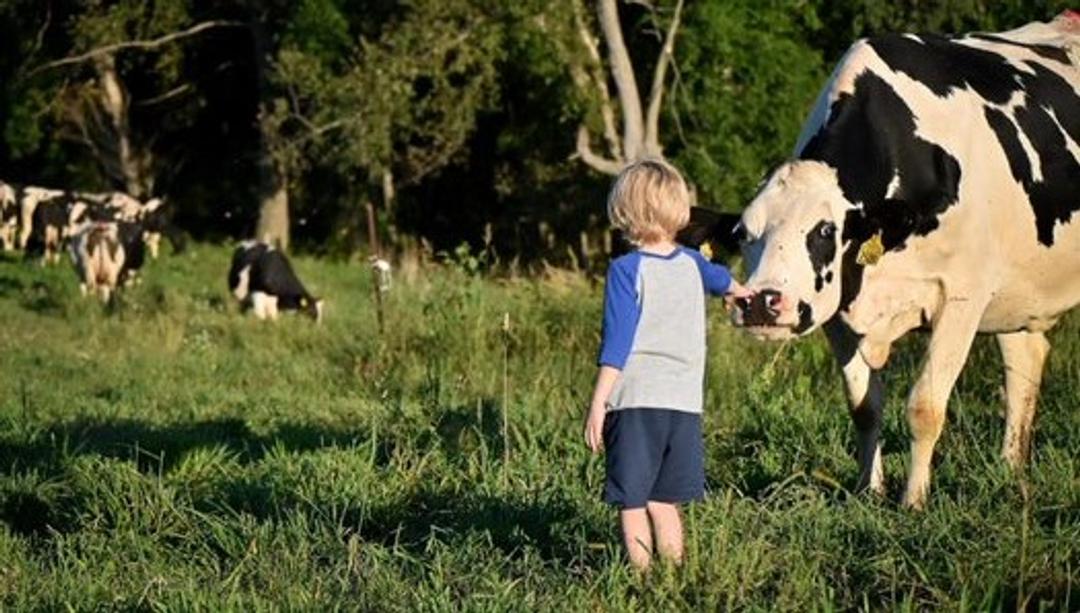
The Wilson family farm, Wisconsin
Taking Care of the Planet
The Wilsons and Gretebecks manage the land and resources on their farms beyond what is afforded them in the program. While the program helps financially, they care for the planet because well, they care.
The Wilson farm participated in an external voluntary offset market before enrolling in the insetting program.
And the Gretebecks have a new eco-friendly compost project that reduced the amount of manure and expired bedding hauled to fields by two-thirds. This cuts down on fuel use to transport the compost, benefits the soil and saves time.
The Wilsons and Gretebecks are just two farms that are doing great things for the planet. Since its beginning 36 years ago, Organic Valley has relied on generations of farming wisdom, combined with the latest science on regenerative agriculture, to make food that’s good for you and the planet.
We know we can always do more. We’ve kept 440 million pounds of chemicals off the land and our owned facilities are powered by 100% renewable electricity. Through organic production and pasture practices, Organic Valley farms already produce 24% less in greenhouse gas emissions compared to the average U.S. dairy farm!
Organic dairy, done right, can be part of the climate solution and not the climate crisis.
An antique typewriter fanatic and chicken mom who treasures time outdoors admiring all that nature has to offer, Jennifer McBride is Rootstock’s editor. McBride spent 15-plus years as a journalist and newspaper editor before finding her niche with the nation’s leading organic dairy cooperative. Contact her at Rootstock@organicvalley.com.
Related Articles
- Tags:
- organic & sustainable living,
- land stewardship & conservation,
- sustainable business,
- climate














